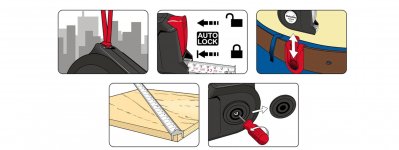The main cause of extrusions warping is that the manufacturer speeds up the process so that the aluminum is still soft when exiting the extrusion die.
But when you have a wide, basically flat, piece like the track, if the part was going to warp, it would be that it would not lie flat on a flat surface. So, basically, if your track lies flat on a known flat surface, you can be reasonably certain that the other plane is going to be straight and true also.
If the part were to warp, it would likely be the flatness, not the straightness.
I have two tracks. Before I posted this, I pushed two pieces together so that aluminum edge pressed against aluminum edge. Mine were perfectly straight.
Also, speeding up the extrusion process affects dimensions. So saw to track fit would also show up as being “off”.
The same issue (but far more noticeable) occurs with plastic extrusions. Injection molded pieces can exhibit excessive shrinkage when the molder shortens the cycle times.
As stated in Mike’s post above, checking on the splinter guard end is probably not ideal.

